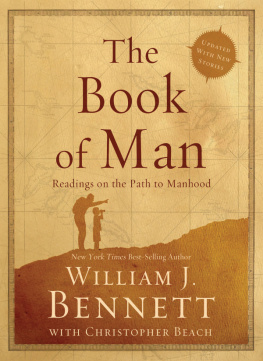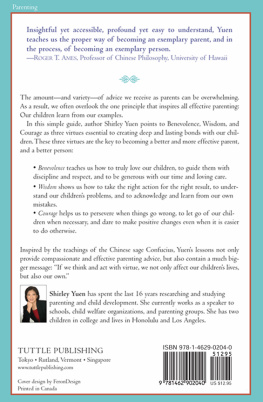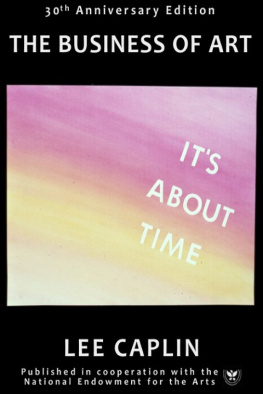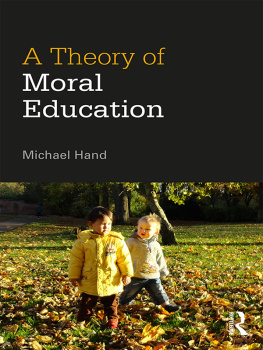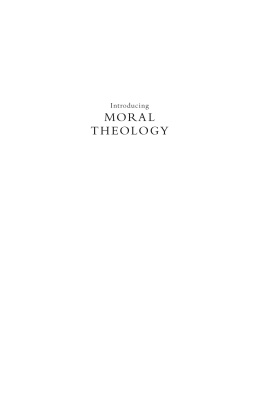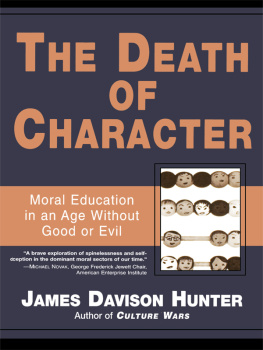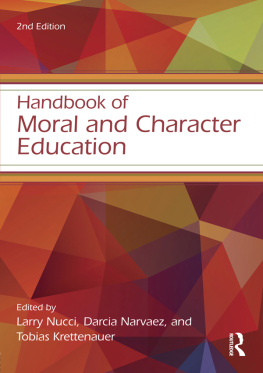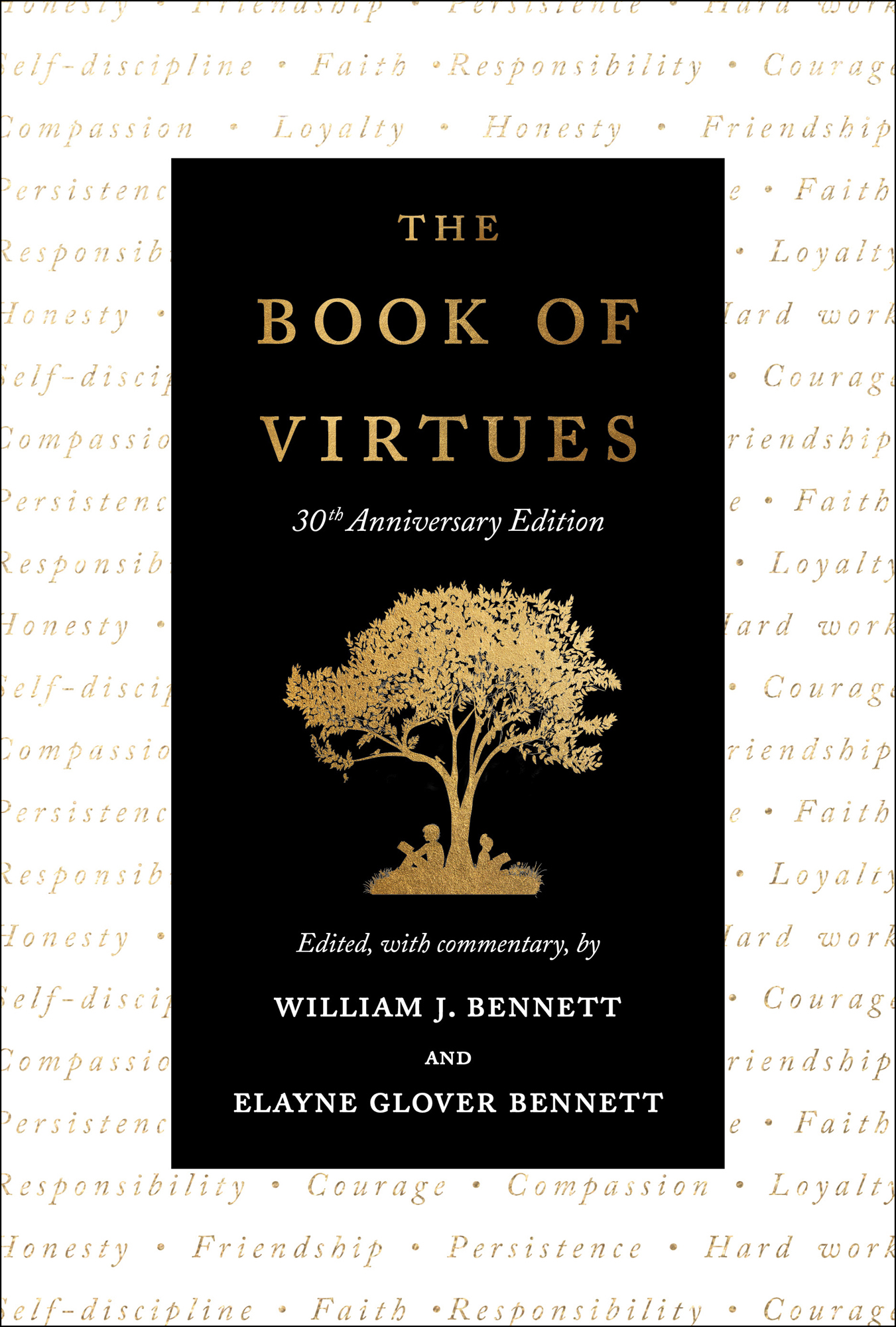Contents
Guide
The Book of Virtues: 30th Anniversary Edition
Edited, with Commentary, by William J. Bennett and Elayne Glover Bennett
To the families of America from our family: Bill, Elayne, John, Krista, William, Joseph, and Casey
Introduction to the Revised Edition

When Simon & Schuster suggested a thirtieth-anniversary edition of The Book of Virtues, our first reaction was, Terrific! We were delighted. Our second reaction was to ask ourselves, Has it really been three decades since the first edition was published?
But it has been a little more than a generation, and millions of children have been raised with The Book of Virtues in their homes. We used it, of course, while we raised our two sons. That first generation of Book of Virtues kids has reached adulthood. We often run into people around the country who tell us I grew up with that book! or I raised my children with that book! Many young adults are now raising their own children with the stories and poems they loved in The Book of Virtues. And many parents and teachers who used the book thirty years ago are now, like us, grandparents, helping to raise a new generation.
Thirty years ago, readers said that the time was right for a book about moral literacy. Back then, Americans worried that schools were no longer parents allies in teaching good character. In fact, many popular books used bad character as a selling point. In some quarters, instruction about right and wrong was viewed as old-school. Great literature that offered moral lessons was seen as not contemporary enough, and the foundations it supplied were being lost. As the Book of Virtuess original introduction noted, moral anchors and moorings have never been more necessary.
Unfortunately, if that was true in the 1990s, its even more true today. The world has changed dramatically. In some ways, it has changed for the better; there are astounding advances in technology, medicine, and communications. More opportunities are now available to more people than ever before. In other ways, the changes have been for the worse. More breakdown of the family. More drug use. Loss of faith in basic institutions like government, schools, and the news media.
The explosion of information has left many unsure of what is true and what is not. Too often, young people hear the message that it does not matter what they do as long as they have the freedom to be who they are, which, presumably, will make them happy. The problem is that without some moral certitudes, all the liberty in the world will rarely bring happiness.
Thirty years after The Book of Virtues became a surprise bestseller, there seem to be more people wondering about what is good and worthwhile, more people seeking direction, more people looking for solid ground. Plato long ago asked the fundamental question What is the good life? His answer had everything to do with the health of the soul. Today, many people who are searching for the good life are not sure what they are really searching for. In an age of smartphones and social media, they are being influenced by what others say they should want.
What is needed is the cultivation of character and an architecture of soulsand that is what virtues like self-discipline, courage, compassion, and faith are all about. The world always changes, but virtues do not. They help provide sure footing for healthy, truly happy souls. Tis virtue then, direct virtue, which is the hard and valuable part to be aimd at in education, John Locke wrote, and not a forward pertness, or any little arts of shifting. The old virtues do not shift on us, even when the world does.
Those solid virtues are what The Book of Virtues aims for.
Some of the readings in this book are our favorites, the greatest hits weve turned to again and again over the years, including the ones our family has loved the most. Fans of the original Book of Virtues will be pleased to know that many of its selections are still right here in these pages. But weve also included some selections that did not make it into the original version, ones we often wished had been included. The new selections, like the originals, are not necessarily familiar stories but time-tested ones you can rely on. In some ways, we believe this edition is richer and deeper than the original.
Three decades of gleaning and sifting material went into making this book. We hope these stories and poems bring inspiration and joy to a new generation, and we fervently hope that generation takes seriously the invaluable moral lessons of the past.
As our family has now entered a new generation, we pray that our sons and our daughters-in-law will educate their children in an even more thoughtful manner, as the need to preserve what is good, fine, and true has never been greater. We offer that prayer for you and your loved ones as well.
Bill and Elayne Bennett
A personal note from Bill: I was very pleased when the good people at Simon & Schuster suggested that Elayne join me as coeditor for this volume. It is a fitting role, since, years ago, she helped shape the original Book of Virtues and its illustrated childrens editions, and she spent many hours reading them to our young sons. She brings wisdom and a great deal of care to these pages, as she does in all she undertakes.
Introduction to the First Edition

This book is intended to aid in the time-honored task of the moral education of the young. Moral educationthe training of heart and mind toward the goodinvolves many things. It involves rules and preceptsthe dos and donts of life with othersas well as explicit instruction, exhortation, and training. Moral education must provide training in good habits. Aristotle wrote that good habits formed at youth make all the difference. And moral education must affirm the central importance of moral example. It has been said that there is nothing more influential, more determinant, in a childs life than the moral power of quiet example. For children to take morality seriously they must be in the presence of adults who take morality seriously. And with their own eyes they must see adults take morality seriously.
Along with precept, habit, and example, there is also the need for what we might call moral literacy. The stories, poems, essays, and other writings presented here are intended to help children achieve this moral literacy. The purpose of this book is to show parents, teachers, students, and children what the virtues look like, what they are in practice, how to recognize them, and how they work.
This book, then, is a how to book for moral literacy. If we want our children to possess the traits of character we most admire, we need to teach them what those traits are and why they deserve both admiration and allegiance. Children must learn to identify the forms and content of those traits. They must achieve at least a minimal level of moral literacy that will enable them to make sense of what they see in life and, we may hope, help them live it well.
Where do we go to find the material that will help our children in this task? The simple answer is we dont have to reinvent the wheel. We have a wealth of material to draw onmaterial that virtually all schools and homes and churches once taught to students for the sake of shaping character. That many no longer do so is something this book hopes to change.



